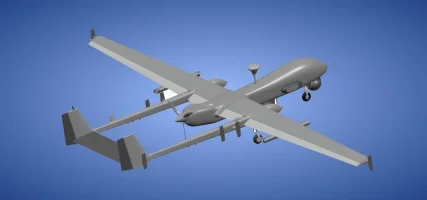- Views: 628
- Replies: 5

In a major boost to India's hypersonic missile program, the DRDO has announced the successful development of a new Thermal Barrier Coating (TBC) designed to withstand the extreme temperatures generated during hypersonic flight.
This breakthrough, achieved in collaboration with the Department of Science and Technology (DST), is a critical step towards the development of next-generation hypersonic missiles.
Hypersonic missiles, capable of traveling at speeds exceeding Mach 5 (five times the speed of sound), are a focal point of military research worldwide. These weapons have the potential to overcome existing air defence systems due to their incredible speed and maneuverability. The development of key technologies like scramjet engines and advanced materials is essential for achieving operational hypersonic capabilities.
The newly developed TBC is made from an advanced ceramic material with exceptional thermal resistance, capable of withstanding temperatures exceeding the melting point of steel. This is crucial for protecting the scramjet engine components from the intense heat generated during hypersonic flight. The coating is applied using specialized deposition methods that not only protect the engine but also enhance its performance and lifespan.
Scramjet engines, or Supersonic Combustion Ramjets, are a type of air-breathing jet engine that enables sustained hypersonic flight. Unlike traditional jet engines, scramjets have no moving parts and rely on the high speed of the incoming air to compress and combust the fuel, making them ideal for hypersonic applications.
The effectiveness of the new TBC was demonstrated during a recent ground test of a scramjet combustor, which achieved stable combustion for 120 seconds – a significant milestone for India's hypersonic program. The test also showcased other key achievements, including successful ignition and advanced thermal management.
The development of this advanced TBC is part of a broader effort by DRDO to develop critical technologies for hypersonic vehicles. In September 2020, DRDO successfully flight-tested the Hypersonic Technology Demonstrator Vehicle (HSTDV), achieving hypersonic speeds for over 20 seconds.
With the successful development and testing of the new TBC, India has taken a major step towards realizing its hypersonic ambitions. This breakthrough will pave the way for the development of more advanced and capable hypersonic missiles, strengthening India's defence capabilities in the years to come.


